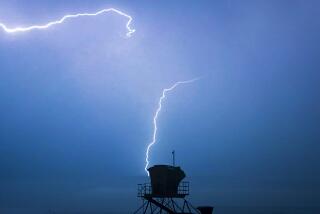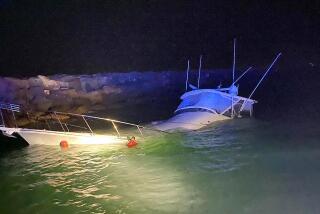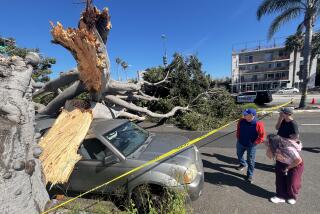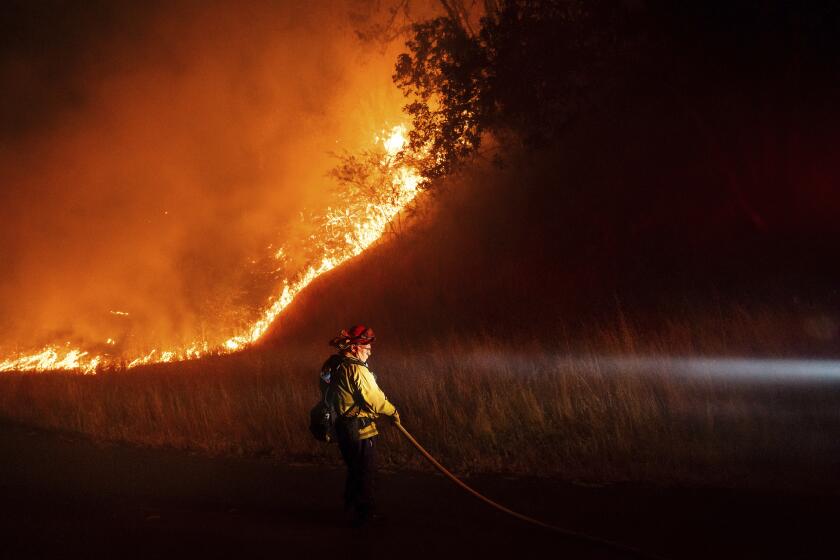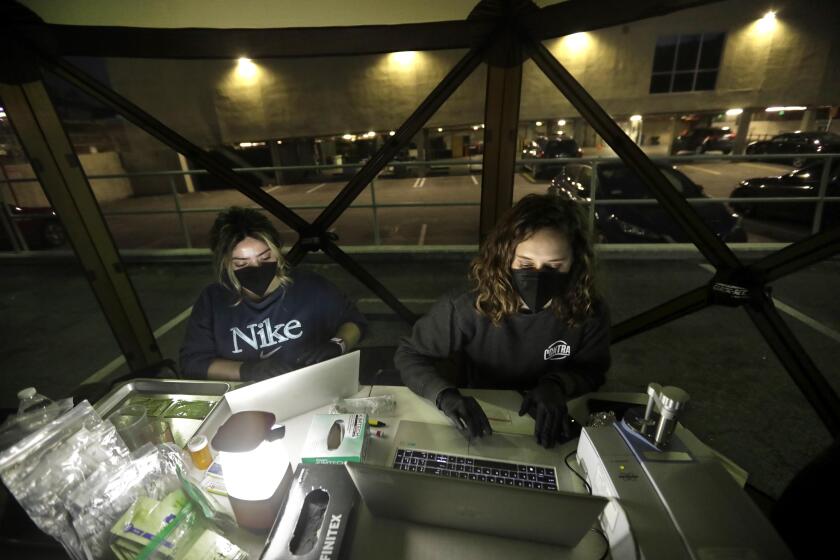Fatal beach lightning strike: Surfer still in critical condition
One person remained in critical condition Monday as a result of a deadly lightning storm that struck Venice Beach over the weekend, a hospital official said.
Los Angeles County firefighters said a 55-year-old man who had been surfing when the lightning hit Sunday afternoon was critically injured.
Mark Wheeler, a spokesman for Ronald Reagan UCLA Medical Center, said a patient from the lightning storm remained in critical condition Monday.
A 20-year-old man who was pronounced dead after being pulled from the water during the thunderstorm was identified Monday as Nick Fagnano of Los Angeles, a former student at Notre Dame High School in Sherman Oaks.
Authorities said he was reportedly floating in the water and not breathing when retrieved, although an exact cause of death had yet to be determined pending an autopsy.
Sunday’s approximately 15-minute thunderstorm struck as more than 20,000 people were visiting the southern portion of Venice Beach; at least four direct lightning strikes hit at about 2:20 p.m., injuring several others.
Lightning from the same storm hit Catalina Island about 90 minutes earlier, injuring a 57-year-old man on a golf course in Avalon and igniting two brush fires, officials said.
Witnesses said the thunder and lightning were so explosive that it shook homes and triggered car alarms.
All told, officials said, firefighters responded to medical complaints by 13 beachgoers, eight of whom were transported to area hospitals.
The possibility of a second round of lightning and thunder over the coastal areas was expected to dissipate later Monday as the weather system set up over the region’s mountains, said Andrew Rorke, a senior meteorologist with National Weather Service.
Bill Patzert, a climatologist with NASA’s Jet Propulsion Laboratory, said the extremely rare weather event Sunday occurred after an intense high-pressure system pulled an unusual mass of hot, moist air up from Mexico and the Gulf of California to the coastal areas, creating the unstable atmospheric conditions. Normally, he said, those air masses travel no farther west than the high desert and mountains.
“Coastal Southern California is virtually lightning-proof. Because it’s so unusual, people are not sensitized to the dangers,” he said.
L.A. County Fire Capt. Brian Jordan advised anyone in the water at the time to see a physician, because electrical burns can sometimes have delayed effects.
Times staff writer Veronica Rocha contributed reporting.
More to Read
Sign up for Essential California
The most important California stories and recommendations in your inbox every morning.
You may occasionally receive promotional content from the Los Angeles Times.
